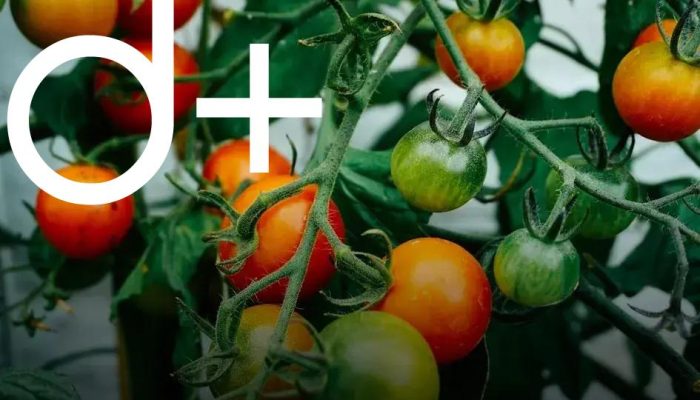Discover the secrets of harvesting herbs at the perfect moment to ensure the best flavor and aroma. Whether you’re an experienced gardener or just starting, understanding when and how to harvest your herbs can make all the difference. Dive into essential techniques, tools, and tips that will take your herbal gardening to the next level. From timing to storage, we cover it all to preserve the full potential of your herbs. Avoid common mistakes and enhance your culinary creations.
The Optimal Timing for Harvesting
Determining the optimal timing for harvesting herbs is crucial to ensure you capture the peak flavor and aroma. The right moment to pick herbs varies depending on the plant, but there are general guidelines you can follow. Generally, herbs are best harvested in the morning, just after the dew has dried from the leaves but before the sun gets too hot. This is when the oils, which give herbs their flavor and scent, are at their highest concentration.
Timing by Herb Type:
- Leafy Herbs: For herbs like basil, mint, and cilantro, aim to harvest just as their blooms begin to form. This stage is known as the pre-flowering state and ensures maximum oil content in the leaves.
- Perennial Herbs: Rosemary, thyme, and sage can be harvested throughout their growing seasons, but for best results, pick them before they flower.
- Annual Herbs: These herbs, such as basil and dill, should be harvested consistently throughout the season to encourage new growth and prevent flowering.
It is important to use clean and sharp scissors or pruning shears to make clean cuts on the stems. This minimizes damage and helps the plant recover quickly. Avoid harvesting more than one-third of a plant at a time to maintain its health and productivity.
By paying close attention to the optimum timing, you maximize both the flavor and longevity of your herbs, making your gardening efforts fruitful and rewarding.
Essential Tools and Techniques

Essential Tools for Harvesting Herbs
To capture the best flavor from your herbs, it’s crucial to have the right tools on hand. A pair of sharp scissors or pruning shears is essential for clean cuts that prevent damage to the plant. This ensures the plant can continue to grow healthy and strong. Additionally, a basket or breathable container helps in collecting the herbs without crushing them, maintaining their delicate structure and freshness.
An essential part of your toolkit should be a garden trowel for those herbs with deeper roots. This allows for gentle uprooting without disturbance to the whole plant system. Consider using a glove as well, especially when handling herbs with defensive mechanisms, like thorns or irritants.
Techniques to Maximize Herb Flavor
The technique of pruning in the morning, just after the dew dries, is often recommended as this is when the concentration of essential oils in the herbs is at its peak. Always cut the herb stems at a 45-degree angle to increase the surface area for water absorption, which benefits the plant’s regrowth.
When harvesting herbs that produce new growth from the base, focus on the upper stems during trimming. This practice encourages bushy and productive growth in plants like basil and mint, ensuring a rich supply of flavor throughout the growing season.
Storing Freshly Harvested Herbs
When it comes to storing freshly harvested herbs, the key is maintaining their vibrant flavors and essential oils. Ensuring they stay fresh begins with proper cleaning. Gently rinse the herbs under cold water to remove any dirt or bugs, then pat them dry with a paper towel.
Store them by lightly wrapping in a damp paper towel and placing inside a resealable plastic bag or an airtight container. For leafy herbs like parsley or cilantro, another great way is to place them in a jar with a bit of water, like a bouquet, and cover them with a loose plastic bag. These methods can extend the shelf life.
For long-term preservation, consider lying herbs flat in a single layer on a damp towel, roll them carefully and place the bundle in the refrigerator. Alternatively, freezing herbs can preserve their flavor. Simply chop them and freeze in an ice cube tray covered with water or olive oil.
Always monitor the condition of stored herbs. Regularly check for any signs of spoilage or wilting. Proper storage techniques not only keep herbs fresh but also ensure that their flavor enhances your culinary creations. By mastering these methods, you capture the best of your harvest and bring delightful aromas and tastes to your meals all year round.
Preserving Flavor with Drying Methods

When it comes to preserving the unique flavors of your freshly harvested herbs, choosing the right drying method is crucial. Drying is an age-old technique that helps lock in the essential oils and flavors while extending the shelf life of your culinary treasures.
There are several methods to dry herbs effectively. Air drying is the most traditional and gentle method. Gather small bunches of herbs, tie them together with string, and hang them upside down in a well-ventilated area away from direct sunlight. This process allows the herbs to dry slowly, maintaining their natural flavors and colors.
Use of a Dehydrator
For a more controlled process, a dehydrator might be the best option. Place the herbs in a single layer on the dehydrator trays, ensuring even air circulation. Set the temperature between 95°F to 115°F and monitor closely. Dehydrators provide consistent temperatures, reducing the risk of losing flavor compounds.
Oven drying is another method, although it requires careful attention. Spread herbs in a single layer on a baking sheet and place them in an oven set on the lowest temperature possible. Keep the oven door slightly open to allow moisture to escape. This method is quicker but requires vigilance to prevent over-drying.
To test if your herbs are adequately dried, try crumbling a small piece. It should break easily and not feel moist. Properly dried herbs can be stored in airtight containers, ensuring a prolonged shelf life and availability of fresh flavoring whenever you need.
Common Mistakes to Avoid
When embarking on the journey of harvesting herbs, it’s easy to get caught up in the excitement and overlook some crucial steps. One of the most basic mistakes is not paying attention to the timing of the harvest. Picking herbs at the wrong time can result in a significant loss of flavor and potency. It’s vital to harvest early in the morning after the dew has dried but before the sun becomes too intense.
Another frequent error involves using the wrong tools. Utilizing dull or improper tools not only damages the plants but can also hinder their future growth. Investing in quality shears or scissors designed for herb harvesting is essential.
Failure to clean tools properly between harvesting different herbs can lead to contamination and unwanted flavors mixing. Ensuring your tools are clean can prevent this issue.
Additionally, many people overlook the importance of labeling and organized storage. Without labels, it’s easy to confuse similar-looking dried herbs, potentially resulting in unintentional flavor combinations that might not be desired.
Lastly, rushing through the drying process by using excessive heat can strip the herbs of their natural oils and flavors. It’s crucial to be patient and allow the herbs to dry naturally or use methods that preserve their essential oils.







![BANNER 1 - HOME [QUADRADO]](https://dailyfindinvestment.com/wp-content/uploads/2025/01/BANNER-300-X-300.gif)
